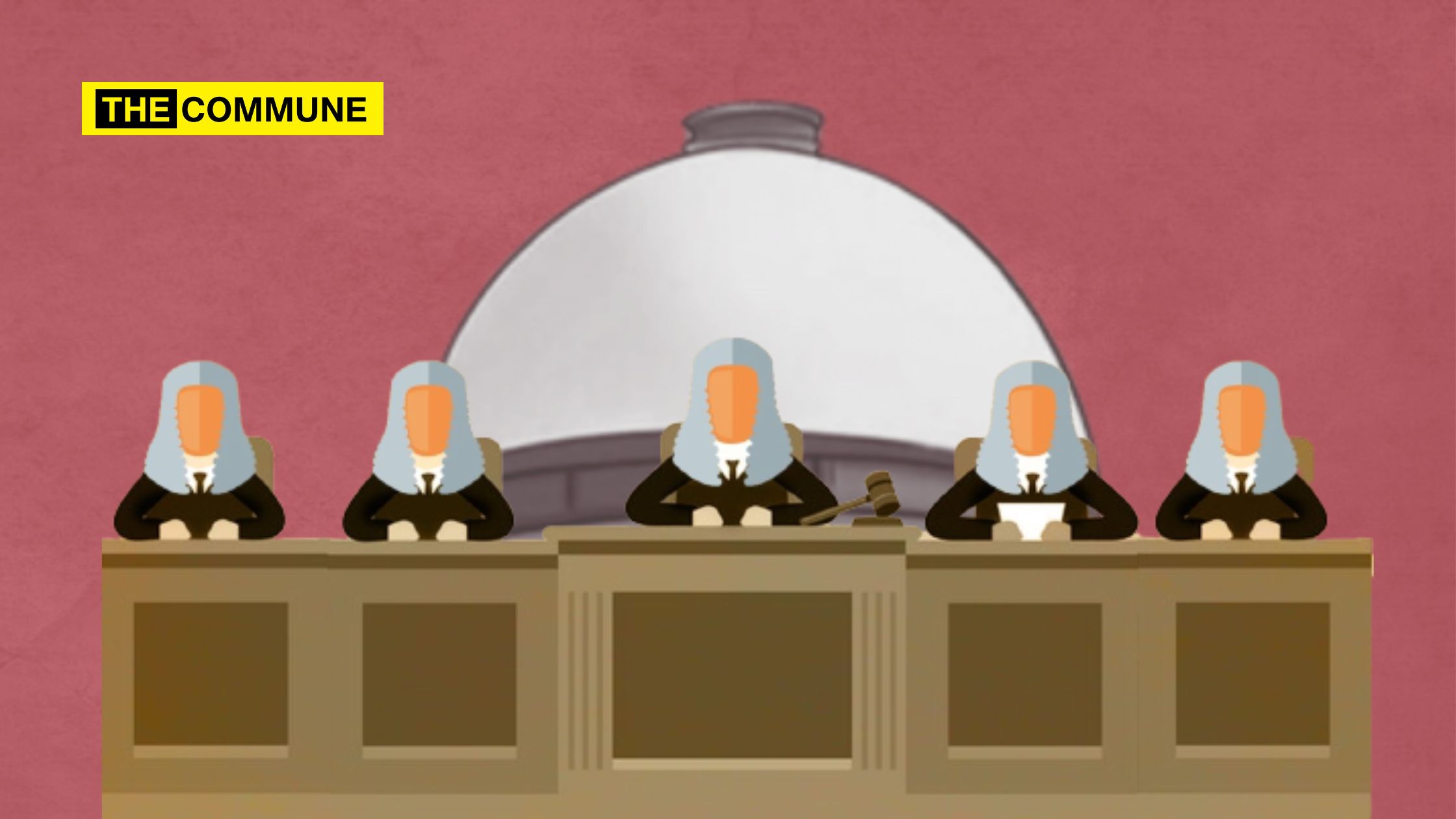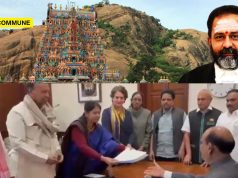
The Supreme Court’s latest verdict, imposing a three-month deadline for presidential assent to state bills, marks a watershed moment in India’s constitutional history—not for its legal brilliance, but for its breathtaking hypocrisy. The same institution that struck down the National Judicial Appointments Commission (NJAC) in 2015, citing the sacred principle of judicial independence, has now audaciously encroached upon the executive’s constitutional domain. Is this the message the judiciary of this country wants to send – When it comes to the judiciary’s powers, even parliamentary amendments are unacceptable; but when it comes to others’ powers, even constitutional silence is no barrier.
Two Sets Of Rules
To understand the magnitude of what the Court has done, it helps to recall a moment from a decade ago. In 2015, the same Supreme Court struck down the National Judicial Appointments Commission (NJAC), a constitutional amendment passed by near unanimity in Parliament and ratified by over 20 states. The NJAC proposed a modest reform: allowing a committee comprising judges, the law minister, and two eminent citizens to select judges—replacing the opaque collegium system.
The court’s logic? Judicial independence is a basic feature of the Constitution. And allowing the executive even a token role in appointments would compromise that independence. So the NJAC was thrown out. The will of the people’s representatives—expressed through Parliament and state legislatures—was set aside by five unelected judges.
In that case, constitutional morality meant that the judiciary must be shielded from any influence, even from elected bodies. “Trust no one,” the court seemed to say—least of all the executive or legislature.
Now cut to 2024. In the Tamil Nadu case, the very same court holds that the inaction of a Governor can be cured by the judiciary taking over his function. No need to wait for the President’s consideration. No need to follow Article 200 or 201, which prescribe the routes for state legislation. Instead, the court invokes its Article 142 powers to declare the bills as assented—bypassing the entire constitutional mechanism.
So here’s the contradiction: When Parliament and states tried to reform judicial appointments via constitutional amendment, the court shut it down. But when the judiciary decides to reform executive inaction through judicial decree, it calls that democracy.
Article 142: From Safety Valve To Judicial Override
Article 142 was designed as an exceptional power to ensure “complete justice” in extraordinary cases. But in recent years, the Supreme Court has weaponized it to:
- Override statutory processes (like in the Tamil Nadu case)
- Legislate policy (as seen in environmental and electoral rulings)
- Micromanage executive functions (now extending to the President’s office)
The Tamil Nadu verdict stretches Article 142 beyond recognition. If the Court can use it to force bills into law, what stops it from using it to annul laws it dislikes? If it can impose deadlines on the President, what stops it from directing the Prime Minister next?
This isn’t constitutional interpretation—it’s constitutional takeover.
The Ambedkarian Irony
In its judgment, the Court invoked B.R. Ambedkar, claiming that constitutional morality demanded upholding the supremacy of elected legislatures. But this is selective Ambedkarism.
Ambedkar was a legalist to the core. He insisted on procedure, on discipline, on constitutional channels. He was no fan of arbitrary Governors—but he also never imagined the judiciary would take over their functions. In fact, his vision required that no organ of the state act outside its sphere.
What we have today is a court that quotes Ambedkar to do exactly what Ambedkar warned against: substituting its wisdom for constitutional procedure.
Judicial Overreach Masquerading As Constitutional Morality
The Court’s reasoning in the Tamil Nadu case is riddled with contradictions:
On Delays: The Court condemns the Governor for sitting on bills indefinitely, yet it has presided over a judicial system where cases languish for decades. If delays are unconstitutional for the executive, why are they acceptable for the judiciary?
On Discretion: The Court insists that Governors must act on the “aid and advice” of state cabinets, yet it fiercely guards the Collegium’s absolute discretion in judicial appointments. If executive discretion is suspect, why is judicial discretion sacrosanct?
On Accountability: The Court demands transparency from Governors and the President but refuses to subject its own opaque Collegium system to public scrutiny.
This selective application of constitutional principles exposes an unsettling truth: The Supreme Court no longer sees itself as an interpreter of the Constitution but as its supreme arbiter—free to restrain others while remaining unrestrained itself.
Governor’s Powers Granted By Constitution
India’s Constitution provides checks and balances for a reason. Article 200 allows a Governor to give assent, withhold assent, return a bill for reconsideration, or reserve it for the President. Article 201 specifies what happens when a bill is reserved. None of these provisions allow the judiciary to step in and say, “Time’s up—this bill is now law.”
Yet that is precisely what the Court has done.
The justices argued that “constitutional functionaries cannot frustrate the will of the legislature.” That is true. But is it then acceptable for the judiciary to override a constitutional functionary, rather than compel him to act according to law?
What happens now when the President reserves a bill and delays it? Can the court step in and grant deemed assent again? Will we see High Courts doing the same for Governors in other states? And what of the central government—can it too be bypassed by court order when it fails to act?
Where does this end?
The Real Threat: Judicial Supremacy Over Democracy
The Court’s latest ruling sets a dangerous precedent. If it can impose deadlines on the President, what stops it from micromanaging other executive functions? If it can “deem” bills as passed despite gubernatorial inaction, what stops it from rewriting legislation altogether? The Constitution envisions a delicate balance of power, but the Court is tilting the scales in its favor—transforming India from a parliamentary democracy into a judicial oligarchy.
Worse, this overreach comes at a time when the judiciary’s own credibility is under scrutiny. The Collegium system remains a black box of favoritism and inefficiency. Judicial vacancies pile up while the Court lectures others on timely decision-making. The same judges who resist even minor executive oversight now feel entitled to oversee the executive.
The Dangerous Road Ahead
This judicial overreach creates three fundamental dangers:
First, it undermines democracy itself. When unelected judges routinely override elected governments, we cease to be a representative democracy and become a judicial oligarchy.
Second, it makes the judiciary a political actor. By inserting itself into governance, the Court invites the very politicization it claims to abhor.
Third, it sets impossible standards. The Court demands perfect functioning from other institutions while its own house remains in disorder – from case backlogs to controversial appointments.
The Bigger Question: Do We Need Governors Or Presidents Anymore?
If the Supreme Court can:
- Override gubernatorial vetoes
- Direct the President’s decision-making
- Legislate through “deemed assent”
…then what’s the point of having these offices at all? Why not just let the Supreme Court govern directly?
With due respect to the Hon’ble Supreme Court, the verdict reopens a critical debate on the balance between constitutional procedure and democratic will.
As the legislative-executive-judicial relationship evolves, the question remains:
Should the will of an elected Assembly be… pic.twitter.com/0QLFYAp4EI— S Sundar Raman (@ssundarraman) April 12, 2025
This isn’t just about Tamil Nadu—it’s about whether India still has separation of powers or just judicial supremacy.
Who Will Judge The Judges?
India’s founding fathers created an independent judiciary to protect democracy, not to supplant it. Yet today, we face the ironic situation where the institution meant to safeguard our Constitution has become its most aggressive reinterpretor.
The Supreme Court would do well to remember: True judicial greatness lies in knowing the limits of judicial power. Before it demands accountability from others, it must first submit to accountability itself.
For when the guardians become the rulers, democracy becomes a mere pretense. And that is a fate no Constitution can survive.
Parliament must seriously reconsider the NJAC or similar reforms to restore balance in judicial appointments. The executive must push back against judicial encroachment. And the public must ask: Who guards the guardians?
Hydra is a freelance writer and a columnist.
Subscribe to our channels on Telegram, WhatsApp, and Instagram and get the best stories of the day delivered to you personally.




